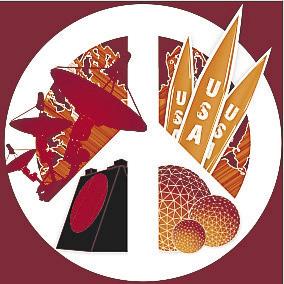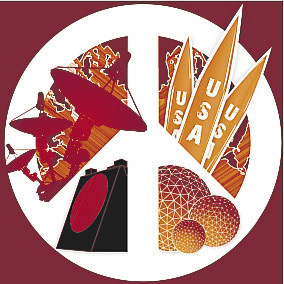 On 1 October, the Campaign for Nuclear Disarmament (CND) is organising a major protest simultaneously at RAF/USAF Fylingdales on the North Yorkshire Moors and at USAF Croughton in Northamptonshire.
On 1 October, the Campaign for Nuclear Disarmament (CND) is organising a major protest simultaneously at RAF/USAF Fylingdales on the North Yorkshire Moors and at USAF Croughton in Northamptonshire.
Fylingdales is a US ballistic missile early warning radar base and could initiate a nuclear response to a missile attack. As part of the US missile defence system, it is also a component of the US nuclear strike force. At Croughton, the US will be spending £200m to turn the base into one of its largest international intelligence hubs with space communications, drone information, missile defence and command and control war-fighting functions.
US nuclear forces consist of the three nuclear delivery platforms – bombers, intercontinental ballistic missiles (ICBMs) and submarine-launched ballistic missiles (SLBMs) – as well as space and cyber capabilities, and ‘ballistic missile defence’ (BMD), all linked through satellite C3 (communication, command and control) systems.
The new BMD addition would move the US closer to a First Strike capability. These ballistic missile ‘defences’ could eventually make the US more able to launch a nuclear attack on Russia without fear of retaliation (because the BMD would stop retaliatory Russian missiles from getting to the US homeland).
If a nuclear weapons state develops missile defence it can be seen as being offensive not defensive.
The opposition to US BMD is increasingly important as US moves to install missile defence systems in Europe and Asia. US BMD is ratcheting up confrontation with Russia and China, blocking moves towards nuclear disarmament, and generating a new arms race.
The US and NATO are making the world a much more dangerous and insecure place by deploying ballistic missile ‘defence’ systems.
Moving the fences
During the Cold War, the US and the Soviet Union built huge nuclear arsenals but knew that an attack by one side would result in retaliation by the other and the complete annihilation of both. This ‘mutually assured destruction’ was sustained by the 1972 Anti-Ballistic Missile Treaty (ABMT) that prevented the deployment of defensive systems by either side to ensure neither gained a strategic advantage.
In his 1983 ‘Star Wars’ speech, US president Ronald Reagan proposed the construction of a missile shield, despite strong objections from Moscow. Eventually, in 2002, US president George W Bush unilaterally withdrew from the ABMT in order to deploy a missile defence system involving the establishment of some components in Europe.
The UK agreed to participate in this new European BMD system, and authorised an upgrade of the radar at Fylingdales and a satellite downlink facility at the Menwith Hill US spy base, near Harrogate. Controversial radar and missile sites in the Czech Republic and Poland, close to the Russian border, were also planned and the US navy developed a relocatable sea-based Aegis BMD system.
Large-scale public protest in Europe followed and before being elected US president in 2008, Barack Obama stated that he would re-evaluate missile defence systems.
Although Obama did cancel the components proposed for Poland and the Czech Republic, he shifted the emphasis from defending the US homeland against ICBMs to defending against regional battleground threats, which involved expanding the ship-based systems and the development of a land-based missile launcher (Aegis Ashore) and an army land-based mobile Terminal High Altitude Area Defense (THAAD) against short- and intermediate-range missiles.
NATO also became involved in 2010 and a joint European system was declared operational earlier this year. The command and control HQ is at Ramstein air base in Germany and there is also a radar base in Turkey and an ‘Aegis Ashore’ site in Romania, with another to be stationed in Poland in 2018. More and more US Aegis destroyers are berthed in southern Spain.
Despite a 1990 agreement with Russia not to push NATO further east after the reunification of Germany, NATO missiles are being placed in former Warsaw Pact countries. Russia has repeatedly expressed concern about the destabilising nature of these moves and the buildup of NATO troops on its doorstep.
Similarly, China sees the positioning of THAAD radar and missile systems in Japan and South Korea as a threat and, although the US and NATO claim that missile defence systems are aimed at Iran and North Korea, Russia and China are convinced that they are the real targets. Consequently they are less likely to talk about disarmament and are building up their own arsenals instead.
The protest at Fylingdales and Croughton is thus urgent and timely. The demo is part of ‘Keep Space for Peace Week’ – an annual week of protest at bases and places around the world associated with the militarisation of space.
Topics: Anti-militarism, Nuclear weapons


